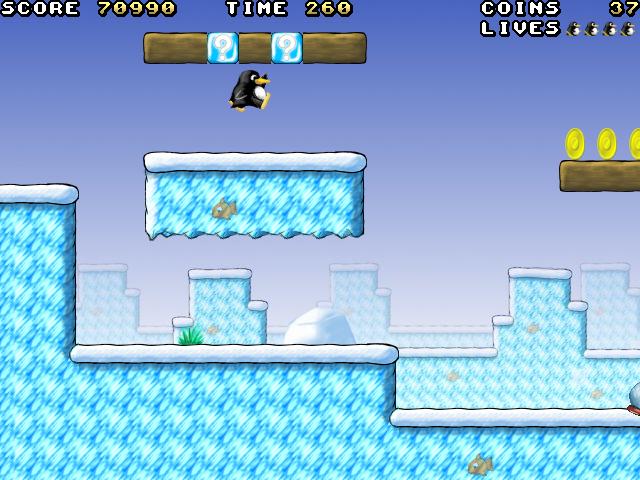|
Jazz Jackrabbit 2
''Jazz Jackrabbit 2'' is a 1998 platform game produced by Epic MegaGames. It was released for Windows, and later for Macintosh. Like the first game, '' Jazz Jackrabbit'', ''Jazz Jackrabbit 2'' is a side-scrolling platform game but features additional multiplayer options, including the ability to play over a LAN or the Internet. The game was re-released on GOG.com along with the first game on November 30, 2017. Gameplay Just like its predecessor, ''Jazz Jackrabbit 2'' is a 2D side-scroller that incorporates elements of shooting and platforming. The player must venture through a series of levels populated with enemies and environmental hazards that may hinder the player's progress. The goal is to reach the level's exit, usually indicated by an exit sign, whilst overcoming obstacles and hazards through the use of running and jumping as well as removing enemies and obstructions through the use of shooting and stomping. The player is given a selection of characters to choose from, ... [...More Info...] [...Related Items...] OR: [Wikipedia] [Google] [Baidu] |
Epic MegaGames
Epic Games, Inc. is an American video game and software developer and publisher based in Cary, North Carolina. The company was founded by Tim Sweeney as Potomac Computer Systems in 1991, originally located in his parents' house in Potomac, Maryland. Following its first commercial video game release, '' ZZT'' (1991), the company became Epic MegaGames, Inc. in early 1992 and brought on Mark Rein, who has been its vice president since. After moving the headquarters to Cary in 1999, the studio changed its name to Epic Games. Epic Games developed Unreal Engine, a commercially available game engine which also powers its internally developed video games like ''Fortnite'' and the ''Unreal'', ''Gears of War'', and ''Infinity Blade'' series. In 2014, Unreal Engine was named the "most successful videogame engine" by ''Guinness World Records''. Epic Games owns the game developers Psyonix, Mediatonic, and Harmonix, and operates studios in multiple locations around the world. While Sweene ... [...More Info...] [...Related Items...] OR: [Wikipedia] [Google] [Baidu] |
Local Area Network
A local area network (LAN) is a computer network that interconnects computers within a limited area such as a residence, campus, or building, and has its network equipment and interconnects locally managed. LANs facilitate the distribution of data and sharing network devices, such as printers. The LAN contrasts the wide area network (WAN), which not only covers a larger geographic distance, but also generally involves Leased line, leased telecommunication circuits or Internet links. An even greater contrast is the Internet, which is a system of globally connected business and personal computers. Ethernet and Wi-Fi are the two most common technologies used for local area networks; historical network technologies include ARCNET, Token Ring, and LocalTalk. Cabling Most wired network infrastructures utilize Category 5 cable, Category 5 or Category 6 cable, Category 6 twisted pair cabling with RJ45 (telecommunications), RJ45 compatible terminations. This medium provides physical ... [...More Info...] [...Related Items...] OR: [Wikipedia] [Google] [Baidu] |
IBM PC Compatible
An IBM PC compatible is any personal computer that is hardware- and software-compatible with the IBM Personal Computer (IBM PC) and its subsequent models. Like the original IBM PC, an IBM PC–compatible computer uses an x86-based central processing unit, sourced either from Intel or a second source like AMD, Cyrix or other vendors such as Texas Instruments, Fujitsu, OKI, Mitsubishi or NEC and is capable of using interchangeable commodity hardware such as expansion cards. Initially such computers were referred to as PC clones, IBM clones or IBM PC clones, but the term "IBM PC compatible" is now a historical description only, as the vast majority of microcomputers produced since the 1990s are IBM compatible. IBM itself no longer sells personal computers, having sold its division to Lenovo in 2005. " Wintel" is a similar description that is more commonly used for modern computers. The designation "PC", as used in much of personal computer history, has not meant "pe ... [...More Info...] [...Related Items...] OR: [Wikipedia] [Google] [Baidu] |
Google Groups
Google Groups is a service from Google that provides discussion groups for people sharing common interests. Until February 2024, the Groups service also provided a gateway to Usenet newsgroups, both reading and posting to them, via a shared user interface. In addition to accessing Google Groups, registered users can also set up mailing list archives for e-mail lists that are hosted elsewhere. Google Groups became operational in February 2001, following Google's acquisition of Deja's Usenet archive. Deja News had been operational since March 1995. Google Groups allows any user to freely conduct and access threaded discussions, via either a web interface or e-mail. There are at least two kinds of discussion groups: forums specific to Google Groups (like mailing lists) and Usenet groups, accessible by NNTP, for which Google Groups acts as gateway and unofficial archive. The Google Groups archive of Usenet newsgroup postings dates back to 1981. On December 15, 2023, Google annou ... [...More Info...] [...Related Items...] OR: [Wikipedia] [Google] [Baidu] |
Deathmatch (video Games)
Deathmatch, also known as free-for-all, is a gameplay mode integrated into many shooter games, including FPS game, first-person shooter (FPS), and real-time strategy (RTS) video games, where the goal is to kill (or Glossary of video game terms#frag, "frag") the other players' characters as many times as possible. The deathmatch may end on a ''frag limit'' or a ''time limit'', and the winner is the player that accumulated the greatest number of frags. The deathmatch is an evolution of competitive Multiplayer video game, multiplayer modes found in game genres such as fighting games and racing video game, racing games moving into other genres. Gameplay In a typical first-person shooter (FPS) deathmatch session, players connect individual computers together via a computer network in a peer-to-peer model or a client–server model, either locally or over the Internet. Players often have the option to communicate with each other during the game by using microphones and speakers. De ... [...More Info...] [...Related Items...] OR: [Wikipedia] [Google] [Baidu] |
Cooperative
A cooperative (also known as co-operative, coöperative, co-op, or coop) is "an autonomy, autonomous association of persons united voluntarily to meet their common economic, social and cultural needs and aspirations through a jointly owned and democratically-controlled wikt:Enterprise, enterprise". Cooperatives are democratically controlled by their members, with each member having one vote in electing the board of directors. They differ from Collective farming, collectives in that they are generally built from the bottom-up, rather than the top-down. Cooperatives may include: * Worker cooperatives: businesses owned and managed by the people who work there * Consumer cooperatives: businesses owned and managed by the people who consume goods and/or services provided by the cooperative * Producer cooperatives: businesses where producers pool their output for their common benefit ** e.g. Agricultural cooperatives * Purchasing cooperatives where members pool their purchasing power ... [...More Info...] [...Related Items...] OR: [Wikipedia] [Google] [Baidu] |
Split Screen (computer Graphics)
Split screen is a display technique in computer graphics that consists of dividing graphics and/or text into non-overlapping adjacent parts, typically as two or four rectangular areas. This allows for the simultaneous presentation of (usually) related graphical and textual information on a computer display. TV sports adopted this presentation methodology in the 1960s for instant replay. Non-dynamic split screens differ from windowing systems in that the latter allowed overlapping and freely movable parts of the screen (the "windows") to present both related and unrelated application data to the user. In contrast, split-screen views are strictly limited to fixed positions. The split screen technique can also be used to run two instances of an application, potentially allowing another user to interact with the second instance. In video games The split screen feature is commonly used in non- networked, also known as couch co-op, video games with multiplayer options. In its mos ... [...More Info...] [...Related Items...] OR: [Wikipedia] [Google] [Baidu] |
Power-up
In video games, a power-up is an object that adds temporary benefits or extra abilities to the player character as a Game mechanics, game mechanic. This is in contrast to an Item (game), item, which may or may not have a permanent benefit that can be used at any time chosen by the player. Although often collected directly through touch, power-ups can sometimes only be gained by collecting several related items, such as the floating letters of the word 'EXTEND' in ''Bubble Bobble''. Well known examples of power-ups that have entered popular culture include the power capsules from ''Pac-Man'' (regarded as the first power-up) and the Super Mushroom from ''Super Mario Bros.'', which ranked first in UGO Networks' ''Top 11 Video Game Powerups''. Items that confer power-ups are usually pre-placed in the game world, spawned randomly, dropped by beaten enemies or picked up from opened or smashed containers. They can be differentiated from items in other games, such as role-playing video ga ... [...More Info...] [...Related Items...] OR: [Wikipedia] [Google] [Baidu] |
Platform Game
A platformer (also called a platform game, and sometimes a jump 'n' run game) is a subgenre of action game in which the core objective is to move the player character between points in an environment. Platform games are characterized by levels with uneven terrain and suspended platforms that require jumping and climbing to traverse. Other acrobatic maneuvers may factor into the gameplay, such as swinging from vines or grappling hooks, jumping off walls, gliding through the air, or bouncing from springboards or trampolines. The genre started with the 1980 arcade video game ''Space Panic'', which has ladders but not jumping. ''Donkey Kong (arcade game), Donkey Kong'', released in 1981, established a template for what were initially called "climbing games". ''Donkey Kong'' inspired many clones and games with similar elements, such as ''Miner 2049er'' (1982) and ''Kangaroo (video game), Kangaroo'' (1982), while the Sega arcade game ''Congo Bongo'' (1983) adds a third dimension via I ... [...More Info...] [...Related Items...] OR: [Wikipedia] [Google] [Baidu] |
Shooter Game
Shooter video games, or shooters, are a subgenre of action video games where the focus is on the defeat of the character's enemies using ranged weapons given to the player. Usually these weapons are firearms or some other long-range weapons, and can be used in combination with other tools such as grenades for indirect offense, armor for additional defense, or accessories such as telescopic sights to modify the behavior of the weapons. A common resource found in many shooter games is ammunition, armor or health, or upgrades which augment the player character's weapons. Shooter games test the player's spatial awareness, reflexes, and speed in both isolated single player or networked multiplayer environments. Shooter games encompass many subgenres that have the commonality of focusing on the actions of the avatar engaging in combat with a weapon against both code-driven NPC enemies or other avatars controlled by other players. Subgenres Shoot 'em up Shoot 'em ups (als ... [...More Info...] [...Related Items...] OR: [Wikipedia] [Google] [Baidu] |
Side-scrolling Video Game
A side-scrolling video game (alternatively side-scroller) is a video game viewed from a side-view camera angle where the screen follows the player as they move left or right. The jump from single-screen or flip-screen graphics to scrolling graphics during the golden age of arcade games was a pivotal leap in game design, comparable to the move to 3D graphics during the fifth generation.IGN Presents the History of SEGA: Coming Home Hardware support of smooth scrolling backgrounds is built into many s, some game consoles, and home computer ... [...More Info...] [...Related Items...] OR: [Wikipedia] [Google] [Baidu] |








